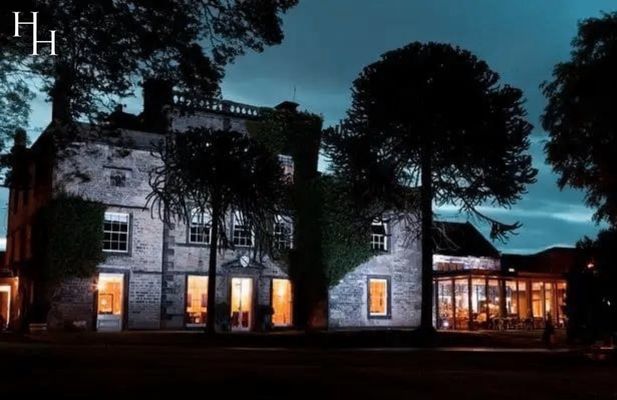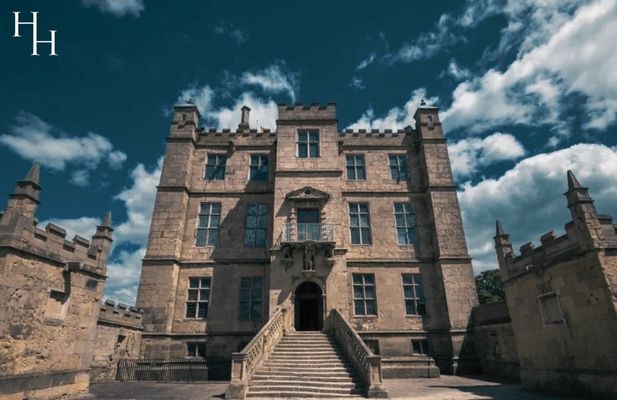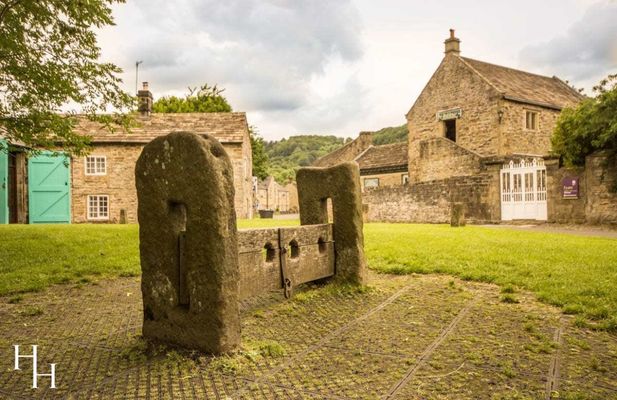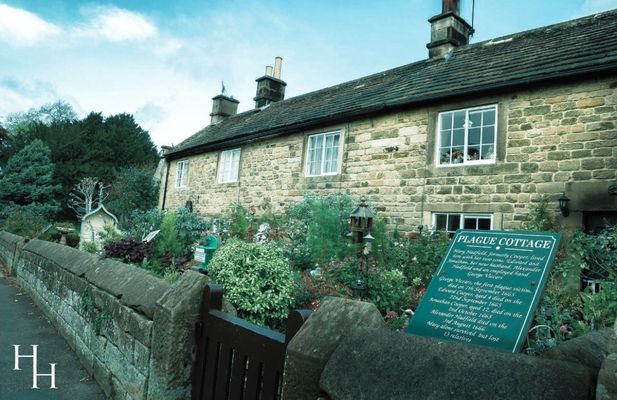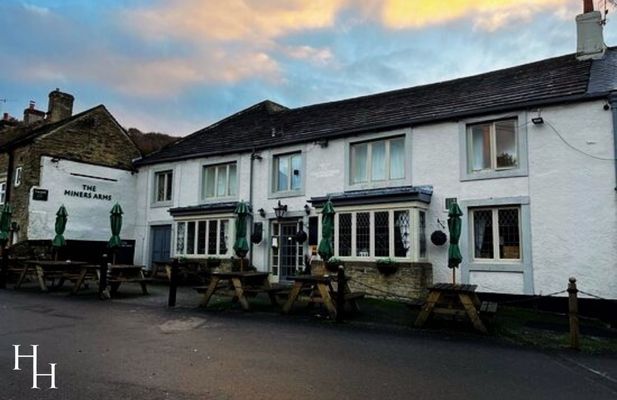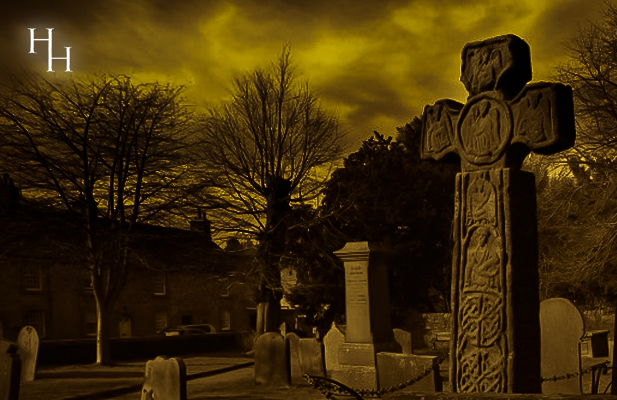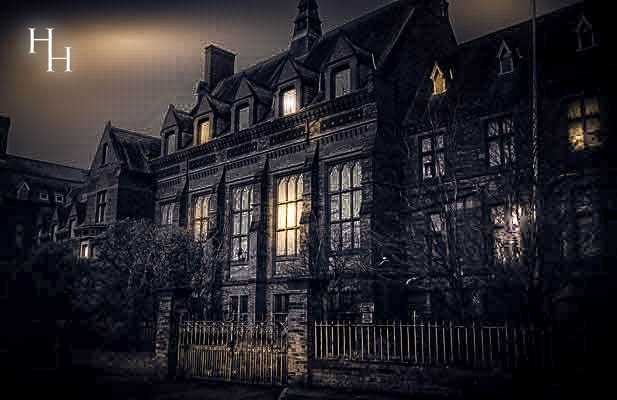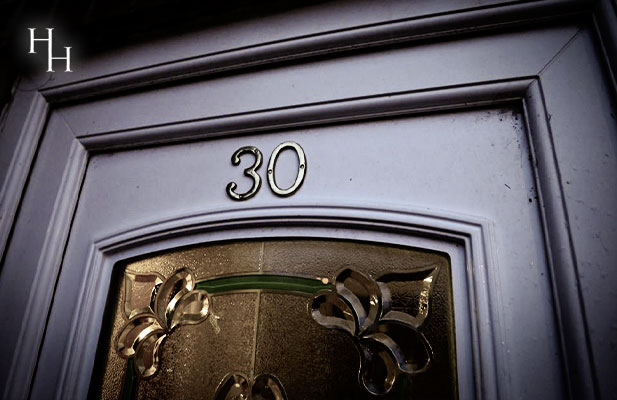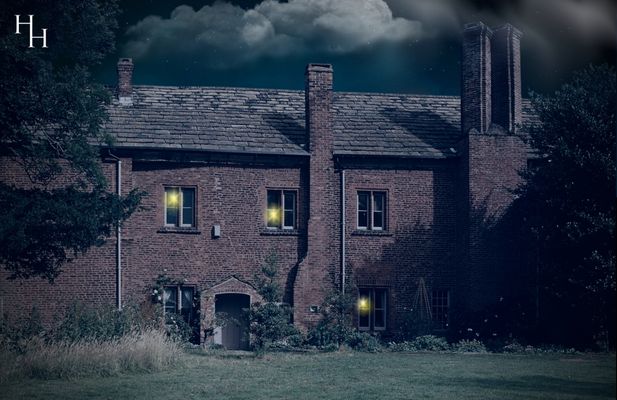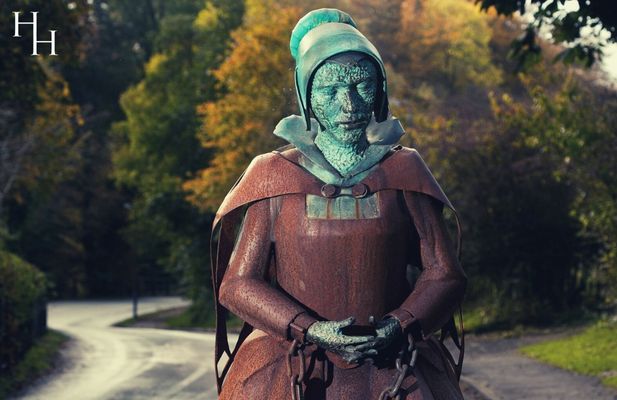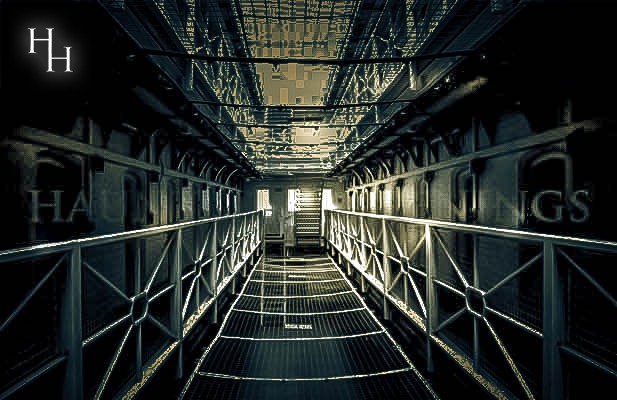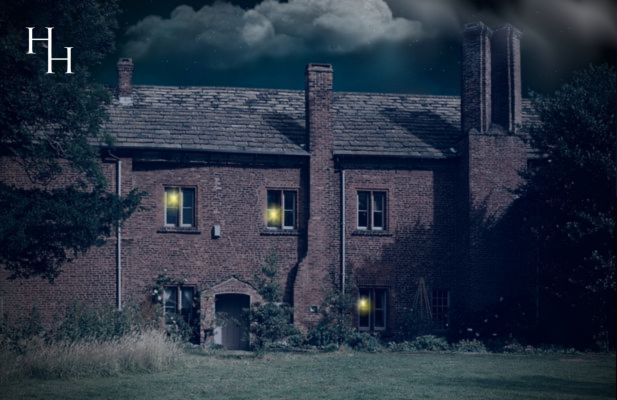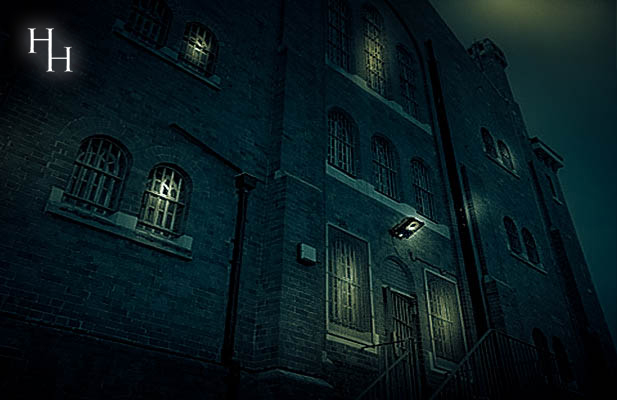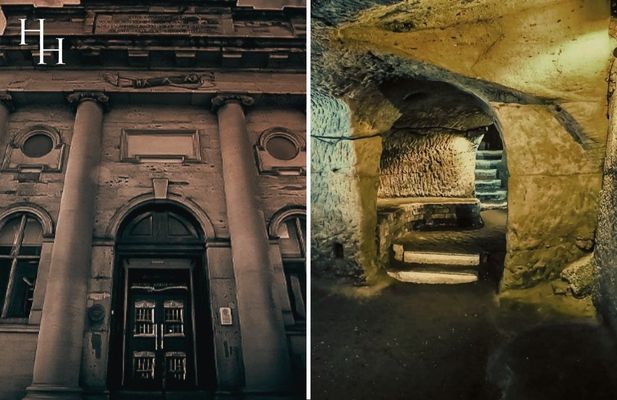Your Tour of The Damned Weekend Itinerary
Our Ghostly Getaways team will take you on a journey that follows the devastation and harrowing locations left in the wake of the Black Death, whilst staying in a haunted hotel set within the beautiful Derbyshire and South Yorkshire countryside.
Your weekend will begin from the moment you check into Mosborough Hall Hotel.
Set within the picturesque village of Mosborough, originally a 12th Century manor house with a very sinister and interesting medieval history relating to Henry VIII.
On the Friday evening you will be greeted by our team, before retiring to the Old Medieval Hall for a delicious three course supper. We will then make our way by car to the magnificent Bolsover Castle for our first ghost hunt of the weekend, where countless bodies of plague victims are thought to be buried beneath the castle grounds. Bolsover Castle is a typically imposing medieval residence which stands proudly over the Derbyshire countryside. With a history of hauntings dating back over hundreds of years and more sightings and ghostly experiences than we could ever hope to mention, Bolsover Castle has everything that a ghost hunter could wish for.
On Saturday, you will awake to breakfast, before heading by coach to the fascinating village of Eyam, famously known as the Plague Village. Surrounded by quaint little cottages, it’s hard to grasp that this picturesque place could have such a tragic story to tell. We will have a guided tour of the village with an insight into its past before a light lunch at the 17th Century Miners Arms. You will have time to explore the village and its places of interest before we return to Mosborough Hall for some relaxation time before yet another three course supper in the Old Medieval Hall.
After dinner on the Saturday, we have the opportunity to investigate Mosborough Hall Hotel, which is steeped in history and a truly barbaric past. Numerous ghostly encounters have been witnessed. We will have access to the Lord Darcy suite, one of the halls most haunted bedrooms, where the White Lady of Mosborough Hall is said to reside.
On Sunday morning, you will once again enjoy a delicious breakfast before heading home.
Ghosts of Bolsover Castle, Mosborough Hall and Eyam Plague Village
Ghosts of Bolsover Castle
The ghosts and spirits that have been encountered at Bolsover Castle leave little doubt that this location is truly haunted. With visitors to the castle seeing apparitions during the day and staff relaying stories of when they have had doors slammed on them and their ankles touched on so many occasions, it is hard to ignore that there is something going on. Balls of white light are seen frequently and a young boy is said to grasp the hands of women as they walk through the garden. Bolsover Castle also has its own Grey Lady which is frequently seen walking through the grounds. There is the sound of crying in the parapets and the screams of a woman heard frequently by so many. In fact some of what has been happening here is so real to those that experience it that they believe they have absolutely encountered the after-life. Disembodied voices and ghostly footsteps following on the stairs of those who walk up them are also often heard.
Out in the grounds themselves there are apparitions caught on camera over the burial mounds of plague pits. Could these be the unfortunate souls buried beneath?
Ghosts of Mosborough Hall
Mosborough Hall has a history of hauntings with tales of spirit encounters dating back as far as the 1600's.
Accounts of the white lady of Mosborourgh Hall are said to have originated from the murder of a governess at the hall in the 1600’s. She had found herself pregnant by the squire, who had promised her monies and a cottage, financially not able to fulfil his promise the governess threatened the squire that she would tell his wife, an argument followed and in a moment of desperation he slit her throat. It is told she kept a large dog and that it pined to death at the side of her body.
At the turn of the 20th Century Dr Pilcher was the local doctor, a no nonsense man who had heard the tails of Mosborough Hall.
In a bid to prove there must be a logical explaination for the hauntings he agreed to spend the night, the following morning he was awoke by a knock at the door by staff bringing tea. They both turned to see the bed was stained with human blood which glistened and dripped onto the polished floor boards. After his experience, Dr Pilcher resigned from his position of medical officer and vowed never to set foot inside again. The blood stains remained soaked into the floor boards and no amount of scrubbing would remove them. Only in Mosborough Halls conversion to a hotel were the stains finally removed by replacement of the floor boards.
Tails of a ghostly dog have been witnessed passing through the walls, the touch of unseen hands, a beautiful lady dressed from head to foot in grey with her dress seen to fill the width of the French windows she is seen at. On Hallows Road numerous encounters have been seen and the angry voices of the unseen echo in the night.
These stories just scratch the surface of the experiences witnessed over the years. Who will we encounter on our night with the spirits of Mosborough Hall.
Ghosts of Eyam Plague Village
The ghosts and spirits that have not only been seen but heard by so many still put fear into those who pass through Eyam Plague Village. There is also a sense of desolation at the site where the plague victims spent their last days, isolated from the rest of the villagers who had become so afraid of catching this deathly disease. Many, many sightings have taken place here.
We will even be having lunch in The Miners Arms, which is said to be extremely haunted.
History of Bolsover Castle, Mosborough Hall and Eyam Plague Village
Bolsover Castle
Bolsover Castle is a remarkable monument, you can only stare in awe as you approach the magnificent towers of the castle. Before the Norman Conquest, Bolsover Castle was situated within the Saxon Kingdom of Mercia. However, In 1086 William The Conqueror granted the manor to William Peverel when he built the original castle. The Peverel's lost the castle in 1152 when they took the wrong side against the new King namely Henry II.
Bolsover Castle changed hands many times after that. It is said that the wall was breached in 1215 in the reign of King John during a siege which was part of a baron's revolt against him. Bolsover Castle eventually became property of the crown when the third William Peverel fled into exile and by 1440 it had lost all strategic importance.
Various tenants occupied the castle but it was then left to ruin over time. It was eventually purchased by Sir George Talbot in 1553, who was noted for a famous association, he was married to Bess of Hardwick, one of the most astute business women of the 16th Century who owned the Chatsworth estate.
The tower, known today as 'The Little Castle', was complete in 1621, a few short years after the death of Charles and Smythson. Charles and Roberts sons, William and John continued the building work and created the terrace range and the riding house. The main reason for erecting the terrace and the riding house was to support Williams position in the King and Queens Court. William's ambition was to obtain a Royal Appointment and to obtain this he had to have a house of a grand stature. He became a Viscount, then Earl, then Lord Lieutenant of the County. He had hoped to become the King's Master of the Horse, horses being a passion of his, but sadly this was not to be. A King did eventually visit Bolsover Castle, King Charles I came in 1634, although the terrace was not fully complete.
Mosborough Hall
Mosborough Hall is a Grade II listed 17th Century building which was originally a manor house in what was then a small village in Derbyshire and dates back to 1180. The hall was then owned by a High Sheriff of Yorkshire, Robert de Stutville, under the resign of Henry II. The hall passed hands many a times, to various Lords of the Manor, including Lord John Darcy and Sir James Strangeways until 1420, when Robert Carey, a Knight under Henry V, defeated a Spanish Knight in a trial of arms at Smithfield and he was granted the Manor of Eckington and Mosborough including Mosborough Hall.
Robert Carey’s grandson, William Carey was born at Mosborough Hall in 1496 and William went on to marry Mary Boleyn, the older sister of Ann Boleyn. Whilst Mary was at Hampton Court, she had an affair with King Henry VIII. However, the affair was short lived and she went on to marry William Carey.
In 1523, King Henry VIII decided to renew his affait with Mary, whilst she was living at Mosborough Hall and married to William. She then went on to give birth to a daughter, Catherine in 1524 and then a son in 1525, who she named Henry, allegedly after his father. Henry VIII then met Ann Boleyn and ended his affair with Mary. Ann found out about the affair and banished Mary from Hampton Court.
When Henry Carey died (William's son), the Queen paid for his funeral and she requested he was buried in Westminster Abbey and his tomb is said to be the largest crypt in the abbey.
Mosborough Hall has also been owned by Joseph Stone in 1671, who built a 110ft brewery house in the grounds of the hall. It is thought this was the start of Stones Brewery of Sheffield, which was later known as Bass Brewery.
The hotel was restored in 1974 from a magnificent 750 year old manor house. No expense has been spared, with each room having been carefully restored and decorated to retain the historic ambience that is rarely enjoyed today.
Eyam Plague Village
In 1665 the Plague arrived in Eyam and by 1666 it had claimed the lives of over 260 men, women and children.
A tailor from Eyam Village, ordered a bale of cloth from London to make up into clothes for the villagers, unwittingly triggering a chain of events that led to 260 Eyam villagers dying from bubonic plague in 1665, more than double the mortality rate suffered by the citizens of London in the Great Plague.
Between the first death and the last, the villagers set an extraordinary and enduring example of self-sacrifice by sealing off the village from the surrounding areas to prevent the disease spreading.
Less than a Century later, Ralph Wain, working in a factory in the village, invented a revolutionary new way of reproducing designs in silk. Together with the miners, spinners, weavers, other skilled craftsmen and women, poets, and writers – he contributed to the rebirth of the village after the plague.
Your Event Includes
- Use of ghost hunting equipment including EMF Meters, K2 Meters etc.
- Experiments including glass divination, table tipping and Ouija Boards.
- Workshop and separate vigils for returning guests.
- Ghost hunting vigils and séances in small groups.
- Includes 2 nights of hotel accommodation (Additional cost of single room supplement per night)
- Free time to investigate alone
This is a weekend event which includes 2 nights of hotel accommodation, bed & breakfast, 3 course evening meal and 2 overnight ghost hunts.
Once you have booked, please contact the office either via email at [email protected] or by phone on 0115 9720570 to let us know your room requirements, please select from; double, twin or single and whether you or anyone in your booking have any dietary requirements or allergies.
Please note: there is an additional room supplement of £30.00 per night for single room occupancy and this will be added to your booking once we know your requirements.
Please note: This event is not suitable for anyone with mobility issues, if you are concerned, please contact the office.
Address, Maps & Hotels
Address & Hotel Information
Mosborough Hall Hotel
High Street
Mosborough
Derbyshire
S20 5EA
For Hotels near to
Tour of the Damned , please click here. opens in a new window
Parking
Information
Accessibility
- This location is not suitable for wheelchair users
- This location is not suitable for people with mobility issues or walking difficulties
Important
- All attendees must be 18 years or older
- All attendees must bring a torch
- Wear sensible shoes and warm layered clothing as the location may get cold at night




